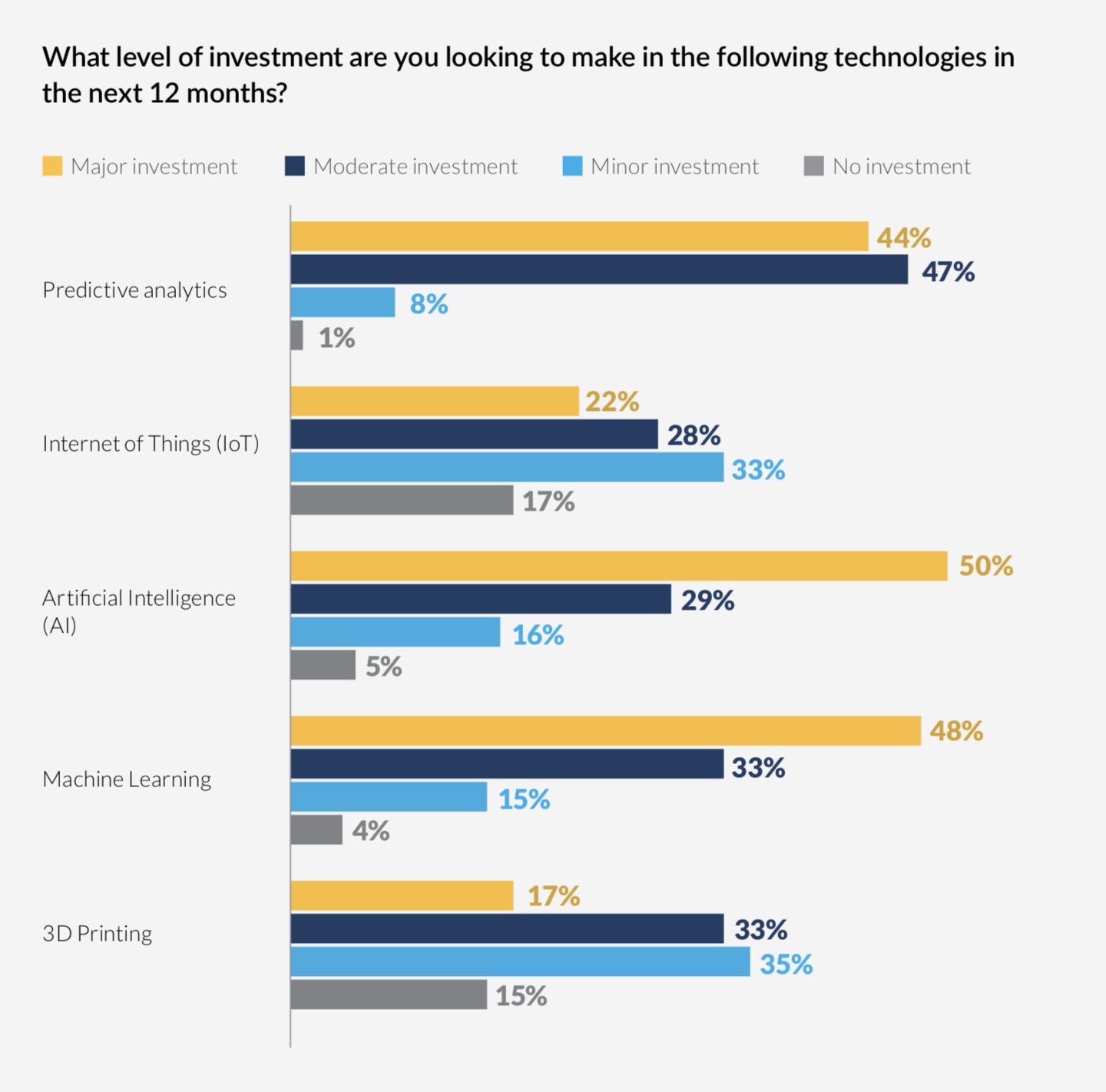
It’s no secret that maximizing product uptime is critical to the success of nearly all end-users of long-lasting, durable goods. In fact, in today’s world, if a product goes down, customers simply won’t pay to use it. This realization is causing the business model transformation race to kick up a notch, and original equipment manufacturers (OEMs) that can efficiently and effectively overhaul their manufacturing infrastructure to maximize product uptime will be the ones that will win that race in the long run.
At the end of the day, the only way to maximize product uptime is to invest in the proper technologies that will support the new service model. The Internet of Things (IoT) market is expected to reach $267B by 2020 and manufacturers need to prepare for the impact this game-changing technology will have on their business. But, our research indicates OEMs’ investment in IoT may be slowing.
Recently, we collaborated with Worldwide Business Research (WBR) to create a new research report, “Maximized Product Uptime: The Emerging Industry Standard,” to determine how prepared manufacturers are to meet rising customer expectations. The research highlights the gap between customers’ increasing demand for maximized product uptime and manufacturers’ ability to deliver it, plus strategies for manufacturers to start meeting these new expectations today.

With only 22% of manufacturers responding that IoT will be a major investment in the next 12 months, it could be that the investment has already been made and the focus is more on the optimization of the data that IoT collects. In fact, millions of data points are already available from sensor equipped products in the field, and that number will only increase over time. The problem is: it’s impossible for a human – or even a team of humans – to sift through that data and act on it in a way that positively impacts their business.
That’s why manufacturers across industries and verticals are relying on Artificial Intelligence (AI) and machine learning capabilities to make this data actionable. More than half of OEMs plan to make AI and machine learning a major investment within the next 12 months, with an additional 29% making it a moderate investment. Either way, it’s clear that the majority of OEMs realize they will need to leverage these emerging technologies to make the next generation of service a reality.
The good news here is that manufacturers are making the necessary investments to make maximized product uptime a reality. The bad news is that customers were ready for maximized product uptime… yesterday. With 87% of end users indicating that a service agreement that guarantees maximized product uptime would be a competitive advantage for their own business, there is no denying that the customer demand is there, and manufacturing infrastructure priorities need to make maximized product uptime the rule – opposed to the exception – now.
Moral of the story: manufacturers are very clear on customers’ expectations for maximized product uptime. 82% even believe prospective customers would consider maximized product uptime in their purchasing decisions. Ultimately, maximized product uptime offers manufacturers a competitive advantage, an enhanced customer experience and additional revenue and profit opportunities, making it the way of the future and the cornerstone of after-sales service organizations for years to come.
Download the report today and discover insights that will inspire manufacturers as they navigate today’s changing world.